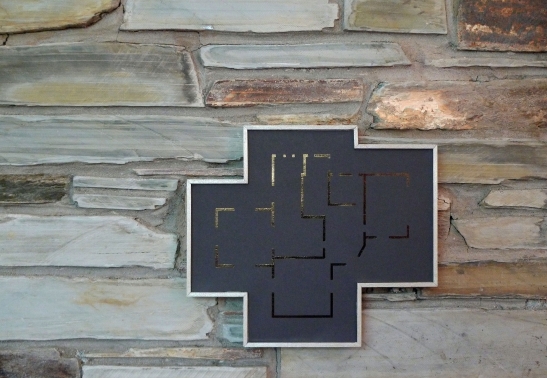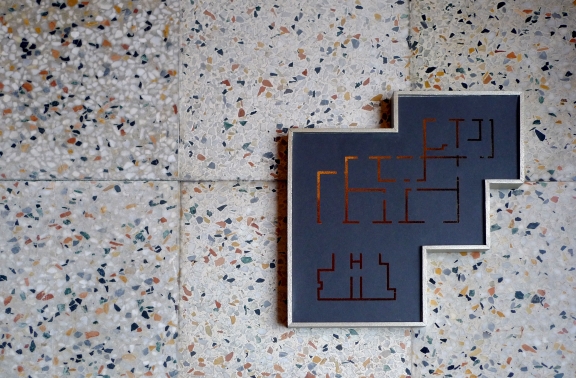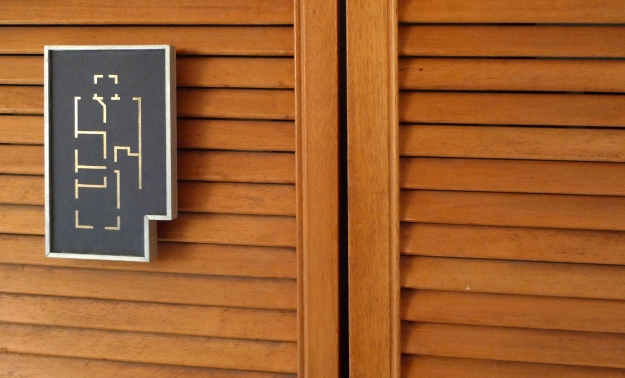


19/20.M/FG/1-8.2014
Mundic / Fools Gold are a set of gold foil prints on construction paper representing the plans of houses in Cornwall with Mundic block.
Fool’s gold
Fool’s gold is the nickname for the mineral pyrite, or iron pyrite. Pyrite is a sulphide mineral with the formula FeS2. Its brassy colour gives it a superficial resemblance to gold, hence the nickname.
Pyrite usually forms cuboid crystals, but can also form dodecahedral crystals, which may explain artificial geometrical models found in Europe as early as 500 BC.
Mundic block problem
Mundic is the old Cornish word for iron pyrite. In South West England in the late 17th century, the word was also used to describe copper ore. Today it is used to describe the deterioration of concrete found in certain buildings across the South West.
From the 1900s to the 1950s many properties in Cornwall were constructed using concrete blocks produced from local materials, such as sand from local beaches, and mining waste. When mass production of concrete blocks became common, the practice died out, although local materials were still being used in block and foundation construction until the early 1960s.
It is now known that some of the local materials used in concrete construction cause deterioration and mechanical weakening of the building form. Sulphide minerals, such as the iron pyrite found in waste mining rock, can oxidise in damp atmospheres producing sulphuric acid. This attacks the cement, causing weakness and expansion – known as mundic decay.
All rights reserved.
Copyright © Sophie Tarbuck.